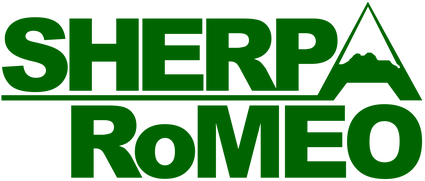Didactic resources: effective mediators to develop reading comprehension
DOI:
https://doi.org/10.55204/trc.v3i1.e150Keywords:
didactic resources, comprehensive reading, teaching-learning, skills, abilitiesAbstract
The didactic resources used in an innovative way contribute to create pleasant and dynamic spaces for teachers and students to interact in this wonderful world of comprehensive reading, for this reason, the present investigation has as a general objective to determine the importance of didactic resources in the development of the comprehensive reading of the fifth grade students of the "Alonso de Mercadillo" School of Basic Education, the type of research was descriptive, its mixed approach, quasi-experimental design; we worked with the methods: scientific, deductive, inductive, synthetic, analytical, statistical, descriptive; The techniques and instruments used were: the interview applied to the teacher and the diagnostic evaluation of comprehensive reading applied to the students, the population consisted of thirty students and one teacher, with a non-probabilistic sampling. It is concluded that didactic resources are effective mediators to raise the level of reading comprehension of fifth grade students.
Downloads
References
Aristizábal, A. (2009). Cómo leer mejor. [Archivo PDF]. https://www.ecoeediciones.com/wp-content/uploads/2015/08/Como-leer-mejor.pdf
Cervantes Castro, R. D., Pérez Salas, J. A., & Alanís Cortina, M. D. (2017). Niveles de comprensión lectora. Revista Internacional de Ciencias Sociales y Humanidades SOCIOTAM, 73-114. https://www.redalyc.org/pdf/654/65456039005.pdf
Criollo, N. R. (2018, March 26). Influencia del uso de los materiales didácticos en el aprendizaje del área de Lengua y Literatura de los estudiantes del 5to. [Archivo PDF]. https://dspace.ups.edu.ec/bitstream/123456789/16015/1/UPS-CT007765.pdf
Durango, H. (2017). Niveles de comprensión lectora en los estudiantes de la Corporación Universitaria Rafael Núñez (Cartagena de Indias) [Archivo PDF]. https://www.redalyc.org/pdf/1942/194252398011.pdf
Iglesias Soto, G. (2008). Estrategias para la enseñanza de la comprensión lectora. Contextos,estudios de humanidades y ciencias sociales, (20), 178. http://revistas.umce.cl/index.php/contextos/article/view/452/446
Luján, I. (2016). Recursos didácticos del Ministerio de Educación. Máster Universitario en Investigación en Didácticas Específicas, 1. https://www.uv.es/uvweb/master-investigacion-didactiques-especifiques/es/blog/recursos-didacticos-del-ministerio-educacion-1285958572212/GasetaRecerca.html?id=1285973234220#:~:text=Un%20recurso%20did%C3%A1ctico%20es%20cualquier,forma%20m%C3%A1s%20clara%20a
Mart́ín Barbero, J. y Lluch, G. (2011). Proyecto: Lectura, escritura y desarrollo en la sociedad de la información [Archivo PDF]. https://www.mimp.gob.pe/webs/mimp/sispod/pdf/354.pdf
Marzal, M. Á. & Prado, J. C. (2014). Objetos de aprendizaje como recursos educativos en programas de alfabetización en información para una educación superior de posgrado competencial. 29(66), 55. https://docs.google.com/viewerng/viewer?url=http://rev-ib.unam.mx/ib/index.php/ib/article/viewFile/54420/48413
Mendez Zamalloa (1991). Medios y Materiales Educativos [Archivo PDF]. https://upvv.clavijero.edu.mx/cursos/LEB0741/documentos/criteriosparalaseleccion.pdf
Moreno Lucas, F. M. (2015). La utilización de los materiales como estrategia de aprendizaje sensorial en infantil [Archivo PDF]. https://www.redalyc.org/pdf/310/31045568042.pdf
Moya Martínez, A. M. (2010, Enero 26). Recursos didácticos. [Archivo PDF]. https://archivos.csif.es/archivos/andalucia/ensenanza/revistas/csicsif/revista/pdf/Numero_26/ANTONIA_MARIA_MOYA_MARTINEZ.pdf
Mujica Sequera, R. (18 de diciembre de 2019). Tipos de recursos didácticos en la enseñanza. https://blog.docentes20.com/2019/12/tipos-de-recursos-didacticos-en-la-ensenanza-docentes-2-0/
Ocaña, J. A. (2010). Mapas Mentales y Estilos de Aprendizaje(Aprender a cualquier edad). https://www.academia.edu/37282792/Mapas_mentales_y_estilos_de_aprendizaje_aprender_a_cualquier_ed
Ovando Galvez, R. (2020). Guía didáctica de lectura comprensiva. Horizontes Revista de Investigación en Ciencias de la Educación, 4(16), 605-612. http://www.scielo.org.bo/scielo.php?pid=S2616-79642020000400020&script=sci_arttext
Ramírez Mazariegos, L. G. (21 de agosto de 2017). La comprensión lectora: un reto para alumnos y maestros. https://observatorio.tec.mx/edu-bits-blog/2017-8-21-la-comprensin-lectora-un-reto-para-alumnos-y-maestros/
Rosell Puig, W. (2011). Particularidades de las series imagenológicas utilizadas en el proceso de enseñanza-aprendizaje. Revista Habanera de Ciencias Médicas, 26(1), 5. http://scielo.sld.cu/scielo.php?script=sci_arttext&pid=S0864-21412012000100014
Santisteban, E. (2015). Didáctica de la lectura. https://www.eumed.net/libros-gratis/2011c/996/index.htm
Sarramone, L. (2012). La lectura comprensiva [Archivo PDF]. http://redi.ufasta.edu.ar:8082/jspui/bitstream/123456789/230/2/2012_GE_002.pdf
Segura, A. (2016). Tecnopedagogía (XVII): La importancia de los recursos audiovisuales como herramienta educativa. https://www.ui1.es/blog-ui1/tecnopedagogia-xvii-la-importancia-de-los-recursos-audiovisuales-como-herramienta-educativa
Suárez Ramos, J. C. (2017). Importancia del uso de recursos didácticos en el proceso de enseñanza y aprendizaje [Archivo PDF]. https://www.scielo.sa.cr/pdf/ree/v21n2/1409-4258-ree-21-02-00442.pdf
Published
How to Cite
Issue
Section
License
Copyright (c) 2023 Mariuxi Elizabeth Ochoa Moreno, Manuel Cartuche

This work is licensed under a Creative Commons Attribution 4.0 International License.
The authors retain the moral and patrimonial rights of their works. They only give to the magazine Tesla Revista Científica the right to the first publication of this. Since Tesla Revista Científica is an open access publication, readers can fully or partially reproduce its content as long as they properly credit the corresponding authors and the journal itself. Tesla Revista Científica undertakes not to make commercial use of the texts it receives and/or publishes.
Our journal is governed by the international policies SHERPA/RoMEO: Green journal: They allow the self-archiving of both the pre-print (draft of a paper) and the post-print (the version corrected and reviewed by peers) and even the final version ( layout as it will be published in the journal).
See also "Copyright and licences".














